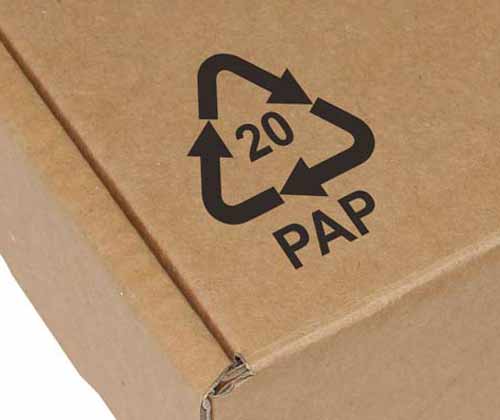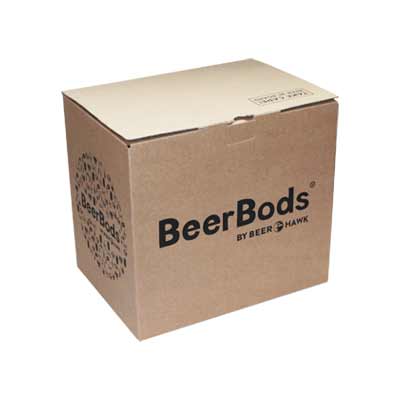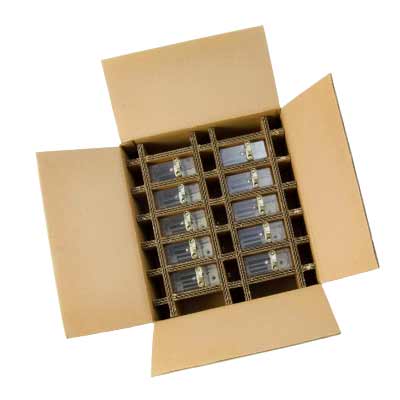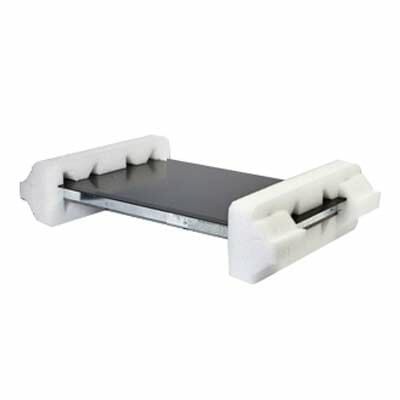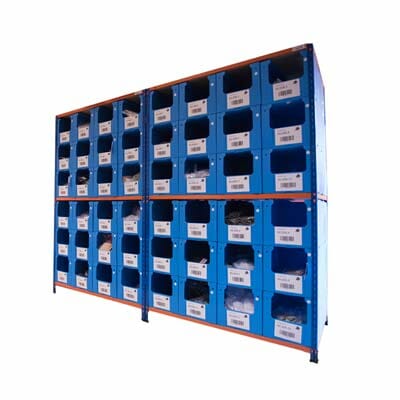Ecommerce Facts & Figures
A collection of statistics covering ecommerce packaging, shopping behaviour and more…
It is common knowledge that there has been a significant growth in ecommerce activity over the past 10 years. And that this has been accelerated further by the CoronaVirus pandemic.
But just how much has online shopping grown by? And what impact has this had on delivery, the packaging used, the environment, bricks and mortar retailers, and shoppers’ habits in general?

Well, this article rounds up a huge selection of ecommerce statistics from a wide variety of sources (with over 200 facts and figures in total). Plus, with so much information to take in, these have been broken down into sections, covering key areas of interest.
Please continue reading to see these ecommerce packaging facts, or alternatively use the table of contents below to jump straight to your area of interest.
Quick Reference / Contents
01 Ecommerce Activity
Just how much has ecommerce activity grown?
Let’s start with some figures that provide an idea of the scale in which ecommerce has grown over the last few years.
As well as some general statistics, this has been broken down into UK specific figures, information on shopper demographics, and some predictions on future trends for this sector.
Scale and growth of ecommerce activity
Online sales across all industries / categories (excluding automotive fuel) saw a ten-fold increase in sales between November 2006 and February 2020 (i.e. before pandemic restrictions were implemented).
However, during 2020 online sales increased by a staggering 74% (although some of this was driven by store closures, lockdown affecting consumers behaviour etc.).
Other estimates put the growth in 2020 at the slightly lower figure of 72.7%.
88% of consumers indicated that they spend more time shopping online since the pandemic struck
Of these, 64% said this new pattern of online shopping is now permanent
And besides this, 30% expect the amount of time spent online shopping to increase in the future too.
The most popular retail category for online shopping in 2020 was fashion / clothing, with 55% of households buying these goods online in the last 12 months.
The least popular purchases were vehicles (bikes, mopeds, and cars) and automotive spare parts, being purchased by only 8% of households.
Despite these figures however, the numbers could be even higher, with as many as 79.17% of internet shoppers abandoning their carts before completing their purchase.
UK specific ecommerce statistics
At the start of the new millennium in 2000, the UK ecommerce market was worth only £1.8 billion.
As such, in 20 years ago the UK ecommerce sector accounted for only 1% of the country’s’ total retail sales.
Fast forward to today, and the UK ecommerce market is worth a whopping £688.4 billion
Other estimates put ecommerce sales in the UK at £693 billion in 2019
In fact, online sales in the UK increased by as much as £15.2 billion between 2018 and 2019 alone.
And Brits are predicted to spend £132.43 billion online in 2021.
This makes the UK ecommerce market the third largest globally, and the biggest in Europe.
Using the estimates above, ecommerce accounted for 18.4% of total business turnover in the UK in 2018 (up from 16.5% in 2017).
Put another way, in 2019 online shopping made up 7.94% of the country’s gross domestic product.
And other studies highlight that e-commerce now accounts for more than one quarter of all retail sales inside the country

This level of activity means that, on average, every man, woman, and child in the UK receives 140 parcels a year.
And a total of 87% of UK consumers make purchases online.
Unsurprisingly, Amazon.co.uk is the biggest online retailer in the UK (more on them later).
Smartphones are now the default device for mobile shopping, with an estimated 62% of Brits using their smartphones to buy items from online sellers.
Dubbed “M-commerce”, shopping on mobile devices in the UK is estimated to grow at an annual rate of 13.6%.
And finally, digital wallets account for just under a third (32%) of all online payments in the UK.
Demographics
The 25 to 34 age group is the most prolific online shopper, with almost all UK residents of this age making a purchase online in 2020.
16–24-year-olds weren’t far behind, with an online purchasing rate of 96%.
And 95% of both 35-44 and 45–54-year-olds also shopped online in the last 12 months
UK residents of over 65 years old were least likely to shop online, although even 65% of this demographic made ecommerce purchases.
This means that the number of seniors shopping online retail has doubled since 2012.
In a further difference between age groups, 23% of those aged 25 – 34 indicated they were likely to continue shopping “all or mostly” online, compared with only 10% of those aged over 55
Although there were significant differences between age groups, the same cannot be said about gender, with 87% of both men and women making online purchases in 2020.
Historically however, men have been more likely than women to shop online. In fact, going back to 2009, the difference between men and women making ecommerce purchases was 9% (66% vs 57% respectively).

Future Trends
The growth of ecommerce activity is expected to continue, with some estimates indicating this will account for nearly one third of all retail sales by 2024.
This estimate may be conservative however, with the UK Office for National Statistics reporting internet purchases already accounted for 31.3% of total retail sales in December 2020.
02: Online vs Physical Retail
How have bricks and mortar retailers been affected by the rise of ecommerce?
An area that attracts a fair amount of media attention is the decline of the high street and traditional physical retail stores (commonly referred to as “bricks and mortar” businesses).
But how much is traditional retail being affected by the growth on online sales?
This next section looks at the reasons why shoppers are increasingly flocking to online providers, and just how much impact this is having on the physical shopping experience.
Reasons for the shift to online shopping
48% of consumers indicate that they choose to use ecommerce sites (vs shopping in store) as it is simply more convenient. 41% also said it is easier and quicker to shop online.
However, a large number are influenced by price and special offers. 44% indicated it is easier to find good deals and sales items online, 38% saying it is cheaper, and 37% arguing there is a better range on offer when shopping on the internet.
Looking at the UK in particular, 57% cite convenience as the key driver for shopping online, followed by 48% saying it is quicker, and 42% highlighting a wider range of options. This suggests UK consumers are less price driven when shopping online compared to their European counterparts.
In fact, shoppers from Germany, Poland, France, and Italy all indicated that lower prices were the key factor in choosing to shop online.
Other studies have indicated that 55% of online shoppers list the ability to compare products / prices as the main reason for looking for products online, with the range of options and cheaper prices being cited by 52% and 44% respectively.
Key drivers of making a purchase online
But what makes shopper pick a particular online retailer over another? Well, 85% of consumers suggest the key factor is that a retailer’s delivery partner is reliable and trustworthy.
Other surveys have pointed to 75% of online shoppers citing a retailer’s consideration for the environment – and sustainability in its actions, products, and services – being the reason they would choose to shop with them.
A more topical study also suggests that as many as 70% of online shoppers are influenced by how a retailer handled and responded to the coronavirus pandemic, and a further 69% looking for businesses that support and work closely with local communities.

How has this affected Bricks & Mortar stores?
But how has the growth of online shopping affected in store purchases? Well, instore shopping is reported to have decreased by 26% following the onset of the pandemic (54% vs 40%).
The biggest loser is in-store household, cosmetic and grocery sales, recording a drop of around 8% overall.
However, some shoppers have returned to the high street. 41% cite the enjoyment and experience of physical shopping as the reason for this, whilst 38% highlight a more personalised experience.
29% also believe it can minimise returns and make returning items easier of they have to.

Smaller independents vs larger retailers
Another recent trend (in part fuelled by the pandemic) is consumers preferring to shop with smaller, more local retailers. This is particularly pronounced for groceries (25%), fashion (24%), Cosmetics (23%) and electrical items (12%).
Saying that, larger retailers / chains still tend to be chosen for the purchase of white goods (63%) and groceries (62%).
50% of consumers express a desire to help small or local businesses
40% also believe that customer service is better (and more personal) more personal with small, independent and / or local retailers
A further 23% believe that small, independent, or local retailers provide a more sustainable / eco-friendly option than larger retailers.
Shoppers in the UK are also far more likely to ‘buy local’ than their counterparts in other European countries.
In fact, only 45% of UK shoppers have ordered a product from international sellers over the past 12 months. This is the second lowest “cross-border” shopping rate in Europe (after Germany, with 37%).
03: Successful Ecommerce Businesses
Omni channel vs pureplay ecommerce retailers
But where do consumers shop online? Which ecommerce businesses are benefiting from this shift? And do consumers favour Omni channel retailers (i.e. those with both an online and physical presence) or purely online businesses (such as Amazon)?
This next section provides some statistics regarding individual retailers that are, in some cases, truly eye opening.
Where do people shop online?
Unsurprisingly, with sales of £12,721.6 million in 2020, Amazon.co.uk is the most popular ecommerce site in the UK.
In fact, it has been claimed that as many as 93% of all UK residents had made a purchase on Amazon in the preceding year (86% specifically on the Amazon UK site).
Tesco was the second largest online retailer in the UK in 2020, with sales of £4,638 million.
Argos.co.uk is next, with sales £4,154.6 million in sales seeing it become the third largest online retailer.
Looking at the other end of the scale, 53% of all SMEs in the UK have an ecommerce presence (even if that is selling on marketplaces such as Amazon or eBay).
Of the small businesses that are not selling online, just over a quarter (26%) indicated they did not as it was not relevant to their business.
5% of SMEs also indicated that they simply didn’t have the staff / resources to set up an online shop, whilst 4% indicated that they lacked the time to be able to do this.
Omni Channel Retailers
Although only third on the list for online only sales, a Statista study indicates that Argos are the largest omni / multi-channel retailer.
DIY specialist B&Q was ranked as the second most popular multi-channel business, with Schuh and Currys PC World taking positions 3 and 4 respectively.
Interestingly, it seems that consumers prefer Omni channel retailers over pureplay ecommerce businesses when it comes to specific categories – particularly fashion and food items.
As many as 56% of online shoppers will purchase clothing, shoes, and accessories from omnichannel retailers in 2021. This is an increase from 48% in 2020.
The contrast is even more stark with food, with 48% buying food items from omnichannel retailers, compared to just 19% and 14% that would shop at food retailers and Amazon, respectively (although this may be due to the entrenched positions of the “big 4” retailers of Tesco, Asda, Sainsburys and Morrisons).
Amazon
Of course, there couldn’t be an article on ecommerce without discussing Amazon (and some of the facts regarding the online behemoth are truly staggering). So let’s start with studies showing that 93% of UK shoppers have purchased from the company (86% specifically from the UK site) in the last 12 months.
Put another way, only 7 out of every 100 people have not purchased from Amazon in the last year!
54% also said their spending on Amazon had increased in the past year.
Nearly half (43%) cited the closure of non-essential retail stores (during lockdowns / COVID-19 restrictions) as the reason they had turned to Amazon
Backing this statistic up, almost the same percentage of consumers (40%) said they had purchased items on Amazon that they would have previously gone into a physical store to buy.

Over half also highlighted using Amazon to look specifically for products they could not find in other stores (57%) or that they could not find on other ecommerce sites (40%)
A quarter purchased products in a category that they had not purchased on Amazon previously.
And consumers were open to trying new brands / products found on the marketplace, with 4 in 10 (41%) purchasing a brand or product that they had not purchased on Amazon (or elsewhere) previously.
Amazon Prime was also a big driver of sales, with 34% citing this as the main reason they chose the retailer over other online sellers.
In fact, more than half of UK shoppers have access to a Prime Account (although only 40% have their own account, 10% will use someone else’s). 6% of those questioned – who did not already have prime – said they were likely to sign up during the next 12 months.
04: Delivery Facts / Figures
Statistics relating to shipping methods, costs, and expectations
Of course, all of these extra products being ordered online have to make their way to consumers somehow. And this has seen a huge increase in the strain placed on delivery and courier firms.
At the same time, individuals’ expectations of when an order will arrive has evolved over time and, thanks to the efficiency of Amazon, many will expect this the next or very same day. And for free!
And whilst this doesn’t cover a crucial aspect of this – the packaging (more on that later) – the following section sets out a number of statistics on delivery of ecommerce orders.
General Delivery Statistics
55% of UK consumers select home delivery as it is the most convenient option.
However, 40% indicate that they select home delivery because it is free (with the retailers they shop with).
UK consumers also expect orders to be delivered quickly – with the majority believing that if they place an order before 4:43pm that it will / should be delivered the next day.
Saying that, a growing percentage expect next day delivery if they place an order up to 8.00pm.
And most UK shoppers believe that 2.00pm is the cut-off point to receive a parcel the same day.
Consumers also expect tracking notifications for the parcels, with a preference for notifications sent by SMS (57%)
A similar number – 54% – also said they will check tracking notifications sent via email.
All of this means that some sources have predicted an extra 200 million parcels in the postal / courier networks.
This is obviously good news for the Royal Mail, which is the UKs’ most commonly used delivery service (accounting for 35% of deliveries by volume).
Amazon logistics (15%), Hermes (10%), UPS (8%) and DHL (7%) take up the next 4 spots and, together, these 5 delivery providers account for 75% of all shipments within the UK.

How can delivery options influence purchasing decisions?
The delivery options provided by ecommerce retailers can actually have a surprisingly large influence on shopping habits. For example, shoppers will reportedly spend an average 30% more on a purchase if shipping is free.
Conversely, long delivery times will deter as many as 41% of customers from making a purchase.
Despite this, it is reported that the average British shopper will be willing to wait as much as 6.7 days to receive their order.
This has however been influenced by the pandemic, which means consumers are willing to wait an additional 2.5 days for their orders to arrive when compared with before the outbreak (previously 4.2 days).
Some studies suggest that 85% of consumers believe a reliable and trustworthy delivery partner is the most important online purchasing consideration (the caveat being that this study was carried out by a delivery / courier business).
Saying that, as many as 25% of UK shoppers in a separate study indicated that they would abandon their cart / purchase if their chosen courier / delivery method is not available.
But delivery issues can see shoppers abandon their carts for other reasons too. In fact, excessive shipping costs – at 61% – is the top reason for UK consumers to not complete their order.
Shipping Costs
Over 55s are the demographic most likely to expect / demand free delivery on all orders, with 60% saying this a key purchase consideration (compared with 47% overall).
Regardless of age, 61% will abandon a purchase because the delivery costs are excessive.
Whereas nearly 3 in 4 UK shoppers will add extra items to their order to reach a free shipping threshold.
There are also studies indicating that, in general, UK online shoppers expect shipping costs to be proportional to the order value. So lower costs for smaller value orders (e.g. sub £15), but a willingness to pay more for higher value purchases (i.e. over £150).
However, a contrasting statistic indicates that as many as 29% of consumers would expect free shipping for higher value items (and would be unwilling to pay any shipping on orders over £150).

4 in 10 UK online shoppers would also be willing to pay extra for carbon neutral shipping.
But less than 1% of online retailers offer carbon neutral shipping as an option.
And finally, 55% of 18- to 24-year-olds want a range of sustainable or alternative delivery options. This is in comparison to only 43% of those aged 55 or over.
Click and collect
Surveys have shown that 96% of consumers prefer home delivery over click and collect (for reasons of price and convenience).
However, other studies would suggest that as much as three quarters of shoppers would want “click and collect” as an option.
A further 47% would like to see alternative delivery options (including collection points, lockers etc.)
Despite this, less than half (47%) of UK ecommerce businesses are able to offer these collection options.
Regardless of these statistics, click and collect transactions are predicted to grow by 5% in the next 12 months.
05: Returns Statistics
A challenge facing all online retailers
Returns have become as much a part of the online shopping experience as any other factor.
This is partly due to the inherent difficulties with assessing a product online (as opposed to seeing a physical item in a retail outlet), as well as legislation giving shoppers 14 days to “change their mind” (which does not apply to instore purchases).
This next section provides some statistics on the state of play regarding ecommerce returns.
Return to Sender
Well over half of UK online shoppers will check a retailer’s return policy before making a purchase with them.
A similar number – 56% – also expect the retailer to take responsibility for both arranging and paying for return shipping.
However, almost half of shoppers (44%) would prefer to drop a return at a carrier’s service point.
30% would prefer for the return to be picked up from their home or office, however.
It is also reported that as many as 54% of UK consumers return online orders regularly, whilst 32% will return items “sometimes”.
Taken together, this means that almost 9 out of every 10 UK shoppers will have dealt with a returns policy previously.
06: Online Payment Trends
Money money money…
With the staggering volume of sales recorded in both the UK and throughout the world, it is no surprise to see that the way consumers pay for online orders is evolving too.
This section provides a brief selection of statistics detailing how ecommerce purchases are paid for.
Digital payment methods when shopping online
Digital wallets are the most popular method of payment for UK ecommerce orders (having finally overtaken debit cards). They account for 32% of all online payments in the UK.
The popularity of digital wallets is also expected to grow – and account for 40% of all transactions by 2024.
Debit cards and credit cards make up 29% and 21% of all online payments respectively.
Buy Now, Pay Later (BNPL) is also growing in popularity, and is predicted to increase from £9.6 billion today to a huge £26.4 billion by 2024
This will see BNPL transactions growing by up to a third over the next 4 years, and accounting for 10% of the total market (twice that of today).

Overall, 18 million UK adults made a digital payment in 2020
But one of the most well know payment providers – PayPal – is in decline (which started as far back as 2017).
Conversely, Apple Pay is fast growing in popularity. 61% of people have used Apple Pay in the last 12 months.
32% also used Google Pay, and 12% have completed digital transactions using Samsung Pay (this can include online purchases, as well as in store buys, restaurants etc.)
Almost 6 in 10 (58%) of British shoppers would cancel an order if the payment procedure is too complicated.
This rises to 67% of millennials that would abandon a purchase if payment were too difficult.
51% of the “Gen Z” demographic would not use retailers that expect them to input payment details for repeated transactions.
And finally, only 59% of shoppers indicate that security and privacy is the key factor when selecting a payment method.

07: Ecommerce Packaging Facts
The role that packaging plays in ecommerce
Whilst many may overlook the packaging that their ecommerce orders are delivered in, this is in fact one of the most crucial areas for online businesses (and we are not just saying that as we are packaging manufacturers!).
Ecommerce packaging can have a huge impact on brand perception, the likelihood for repeat business, a business’ environmental impact, and of course even if the products arrive in one piece (therefore helping prevent returns).
As such, this section highlights a number of interesting ecommerce packaging facts and figures.
Brand Experience / Unboxing
Although it can be the first (and potentially only) physical interaction that a customer has with a brand, half of consumers said the “unboxing experience” provided by ecommerce packaging was underwhelming.
A third also said that the packaging they received would discourage them from purchasing from the same retailer again.
Similarly, 52% of online shoppers that receive orders in customised packaging are more likely to shop with that company again in the future.
The number of consumers reporting receiving ecommerce orders in unbranded packaging has also increased in 2021, to 45% (vs 32% in 2020).
Another statistic that indicates that businesses may be overlooking their ecommerce packaging, is that searches on Google for “unboxing experience” have dropped by 22% year on year.
There are arguments that this reflects UK consumers however, with 58% reported as considering the packaging as an afterthought (or not considering it at all).

Very few shoppers – only 1 in 5 – are interested in getting information on the packaging their goods will ship in before they order online
Other studies have indicated that consumers often form an impression of a brand within 7 seconds – making ecommerce packaging an essential tool for customer loyalty and brand perception.
Other research shows that a similar number of consumers consider their ecommerce packaging as important as the brand of the retailer they are buying from (10% vs 12%). Many consumers assume this is in fact the same thing.
And finally, businesses that pay attention to their packaging and the unboxing experience typically report a 30% increase in consumer interest.
Transit Protection / Excess Packaging
Surveys have highlighted that consumers taking receipt of damaged goods has increased from 5% to 9% year on year
14% of consumers also indicate that their deliveries arrive with too much packaging. This is however an improvement from 2020 (16%).
Overall, 75% of UK shoppers have been frustrated with excess or difficult to open packaging, and would like retailers to minimise the packaging used.
Saying that, excessive packaging is only third on the list of shopper’s frustrations when ordering online (with excessive costs and delays to deliveries being the main annoyances).
Another statistic suggests that 58% of online shoppers will not do anything or do not care about the volume of packaging they receive.
Another study – this one by Which – details that as many as 40% of customers believe online deliveries arrive in boxes which are too big.
The same study also suggests that 48% of customers agree that excess packaging sis one the biggest frustrations with online shopping.
42% also indicate that they will take some sort of action if deliveries arrive in packaging that is not environmentally friendly, particularly if the retailer is selling baby / children’s products.
15% of shoppers would not shop from an online seller again if they are unsatisfied with the packaging, whilst other would leave a bad review and / or tell friends and family not to shop with the retailer.

Subscription Boxes
Another area of ecommerce that is growing in popularity is subscription boxes, with around 1 in 7 (14%) of UK consumers having purchased one in the past year.
The most popular category of subscription box is snacks and drinks, with 33% of subscription boxes containing these items.
Meal in a box ingredient services (22%) and makeup / beauty products (20%) are also popular.
37% of subscribers to these services / products indicate convenience as being the main factor in doing so.
However, a third simply say they subscribed as they wanted to treat themselves (which ties in with pandemic restrictions and consumers looking for relief from the situation).

One in seven people signed up in order to avoid having to visit physical retail stores (the study includes data from before and during the pandemic).
Other statistics indicate that subscription boxes still have some way to go, with the majority of UK consumers (84%) having not purchased any.
More males than females (59% vs 49% overall) have subscribed to this type of offering.
Millennials – at 53% – are more likely to have purchased subscription boxes than the wider population.
Saying that, almost two thirds (59%) of those who have purchased subscription boxes are in the ABC1 demographic (making them more likely to work in professional jobs).
General packaging facts
Approximately 90% of all orders in the US are shipped in corrugated cardboard packaging – with the figure being very similar in the UK.
The UK packaging industry, as a whole, employs around 85,000 people. This is close to 3% of the entire manufacturing workforce!
The UK packaging industry has – by some estimates – a sales volume of around £11 billion.
And those in the packaging industry are hard workers, with some report suggesting that productivity is twice that of the average across all industries.
08: Environmental Impact
Are consumers aware of the environmental impact of their online shopping?
An area of growing focus (and concern) is the environmental impact pf ecommerce retailers.
Whilst packaging is often the focus of consumers ire in relation to environmental impact (particularly oversized boxes and non-recyclable items such as polystyrene), many are now considering how the number of deliveries – and vehicles this requires – affects sustainability.
This section covers a number of surveys, findings, and statistics to gauge consumer opinion on the environmental impact of their packaging and online shopping.
Packaging and the environment
Looking at the overall statistics, it would appear that waste (including packaging) is of more concern to the average shopper than the carbon emissions generated by increased deliveries.
57% of UK shoppers believe that online shopping poses risks to the environment.
73% of consumers indicated that the packaging they received their online orders in was recyclable – an increase of 10% compared with 2020, and 34% vs 2019)
Three quarters of online shoppers want ecommerce sellers to minimise packaging waste, and to ensure they use environmentally friendly / sustainable materials.
92% of UK consumers consider packaging that can be recycled as environmentally friendly.
Despite this focus on packaging, studies have suggested that, on average, the impact of packaging on the environment is typically less than 10% of the product(s) it was used to ship.
Packaging also makes up less than 20% of household waste in the UK
And the small amount of packaging material that is not recovered for recycling makes up less than 3% of waste that is sent to landfill each year.

Consumer behaviour and recycling
3 in 4 consumers place importance on retailers considering the environmental impact and sustainability of their products and services.
Surprisingly, some studies have shown that Millennials are less eco conscious that previously assumed, with this demographic finding excessive packaging to be less of an issue than those over the age of 35.
Conversely, Millennials are the most willing to pay extra for sustainable / eco-friendly packaging (£1.19 extra per parcel compared with 47p for those over 65).
The most common action that consumers desired from retailers was the use of sustainable packaging, with 54% expecting this from larger retailers, dropping to half (50%) for smaller independent shops / sellers.
Spain – at 64% of consumers – had the highest proportion of consumers that wanted to see more sustainable packaging. The UK was in second at 63%.
Other statistics indicate that approximately 1 in 5 consumers would no longer purchase from a retailer that did not use sustainable packaging.
This does mean however that 81% will still buy from companies using non sustainable packaging.
A similar number see themselves as eco-friendly, even though the number saying they buy from eco friendly brands drops to 50%.
Nearly all UK consumers also say being environmentally friendly is important (84%), but of these 68% cannot name a single environmentally friendly brand / company.
A further group (just over 48%) believe sustainability isn’t important – but that they are recycling anyway.
Whilst 67.2% of all online shoppers regularly recycle.
And whilst 97% of consumers questioned would follow on pack recycling instructions where possible, as much as 14% of packaging comes without any clear guidance on how to recycle.
Eco friendly shipping
Besides packaging, there is more focus than ever on the impact that increased volumes of shipping has on the environment. With this in mind, as many as 40% of UK consumers would be willing to pay more for green shipping
However, only 1% of online sellers in the UK offer an eco-friendly shipping option.
Younger shoppers are most interested in having a range of sustainable shipping options, with 55% of 18–24-year-olds highlighting this as important to them (compared with only 43% of over 55s).
Other ideas that consumers would be interested in includes a minimum delivery charge (to minimise the number of journeys), with 54% believing this is a good idea.
Similarly, 44% believe you should have to order a minimum number of items and / or value to qualify for free shipping.
47% also think that all delivery vehicles should be electric or low emissions.
09: Other Ecommerce Statistics
Other factors that have affected ecommerce sales
It could be argued that the economic landscape has been in such a state of flux – thanks to Coronavirus restrictions, lock downs, Brexit, and a huge range of unprecedented circumstances – that many of the statistics featured in this article will provide little use in predicting future trends.
But what impact have these factors had to date?
This final section covers a range of miscellaneous facts and figures relating to Brexit, social media presence and of course COVID 19, that have done so much to shape the current situation.
Coronavirus Pandemic
Over three quarters (77%) of UK shoppers say they have purchased more products online since the start of the pandemic.
Conversely, in store shopping has seen a decline of 26%
With the shift to online, more than two thirds of consumers have suffered from shipping delays since the onset of COVID 19
In fact, the average delay for shipping in the UK stands at approximately 1.9 days.
This is a similar story in Europe, with shipping delays there typically being 2 days.
Being understanding of the situation, Brits are now willing to wait 6.7 days for deliveries to arrive (2.5 days longer than pre-pandemic).
The pandemic has also seen consumers shop closer to home, with only 32% (down from 45% before the pandemic) shopping with international companies.
The pandemic had the largest impact on food retailers, with this sector seeing a huge 143.5% growth in online orders (largely due to restaurants and pubs being closed).
During the peak of pandemic, it was reported that 42% of UK shoppers planned to buy more online in the future.
With restrictions now having eased somewhat, even more Brits (55%) said they plan to make more purchases from ecommerce sites.
Whilst only 9% of UK shoppers purchased from new or different physical stores than previously in 2020, almost a third (28%) shopped with a different online retailer.
This trend is / was set to continue in 2021, with 29% of consumers indicating they would purchase from new online retailers, whilst only 14% expect to shop at a different “bricks and mortar” store.
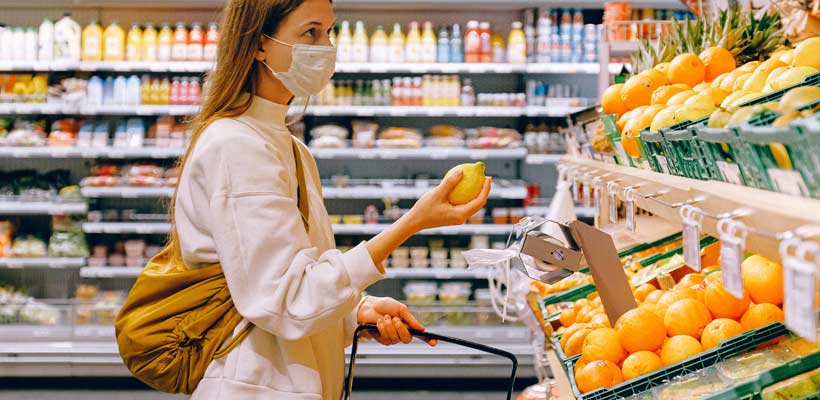
Social Media
Of course, social media is intrinsically linked to ecommerce businesses online presence. In fact, 52% of consumers suggest they are more likely to purchase from an online retailer if they can trust them based on their social media presence.
As many as 4 in 5 also favour brands that communicated how they put customers and employees first during the pandemic.
Saying that, 60% feel that businesses over communicated during the pandemic.
Brexit
And finally, Brexit. It is clear that consumers both within the UK and the EU believe this will have an impact on their online shopping habits. For example, 66% of UK shoppers feel that buying from the EU will become more expensive
A further 64% also believe that delivery of goods ordered from EU sellers will take longer
In fact, UK shoppers are much more likely to purchase locally than their European counterparts, with only 45% saying they have shopped with international retailers in the past 12 months (only Germany is lower, at 37%).
On the other hand, 72% of EU residents believe that buying from the UK will also become more expensive for them.
And 69% also think goods will take longer to reach them if they order from UK sellers.
In Summary
Analysing ecommerce statistics
The rise in the available data on ecommerce activity, shopping habits, packaging, delivery and returns indicates just how complex (and fast paced) this area has become.
This is also why it pays to work with specialists in the varying areas involved in becoming a successful online business, or maintaining growth and success (i.e. if you are already an established online seller).
Your ecommerce packaging is no different. And working with a specialist packaging manufacturer – such as GWP – can allow your business to realise benefits that cover everything from brand / unboxing experience, delivery, fulfilment efficiency, and much more besides.
So if you would like help with your ecommerce packaging, or a no obligation review, please get in touch.
References
Share this article
Further reading
About the Author

Jay joined GWP Packaging in 2008, before going on to hold senior positions at VPK and Cotswold Packaging. He maintains close ties with GWP and Macfarlane.
Featured Products
View the packaging in this guide...
Get in Touch...
We're here to help!
Related Guides
Free PDF Download

21 Considerations When Sourcing Ecommerce Packaging
Get your free guide highlighting 21 crucial considerations when sourcing your ecommerce packaging





















